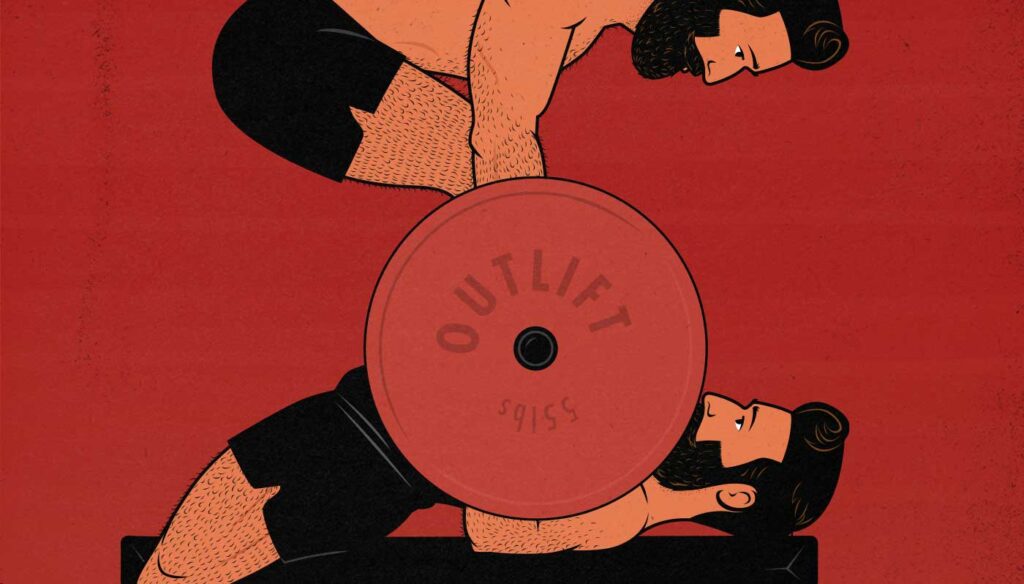
How to Do Supersets
Building your workout routine out of supersets is one of the best ways to build more muscle in less time. Not because there’s anything magical about them—although there might be—but because they make our workouts so much denser and more efficient. And there’s no real trade-off, either. You’ll still gain the same amount of strength, still get similar cardiovascular benefits.
Thing is, most people do supersets incorrectly. They rest too little between their sets, which is fine for general fitness, but it reduces the amount of muscle mass and strength they gain. Or they superset the wrong exercises together, limiting the amount of weight they can lift, and turning them into a less effective form of drop sets. So if you want to keep your workouts focused on building muscle, there’s a specific way to do them.
So, what are supersets? What’s the best way to do them? And how can you cut the length of your workouts in half while still gaining the same amount of muscle size and strength?
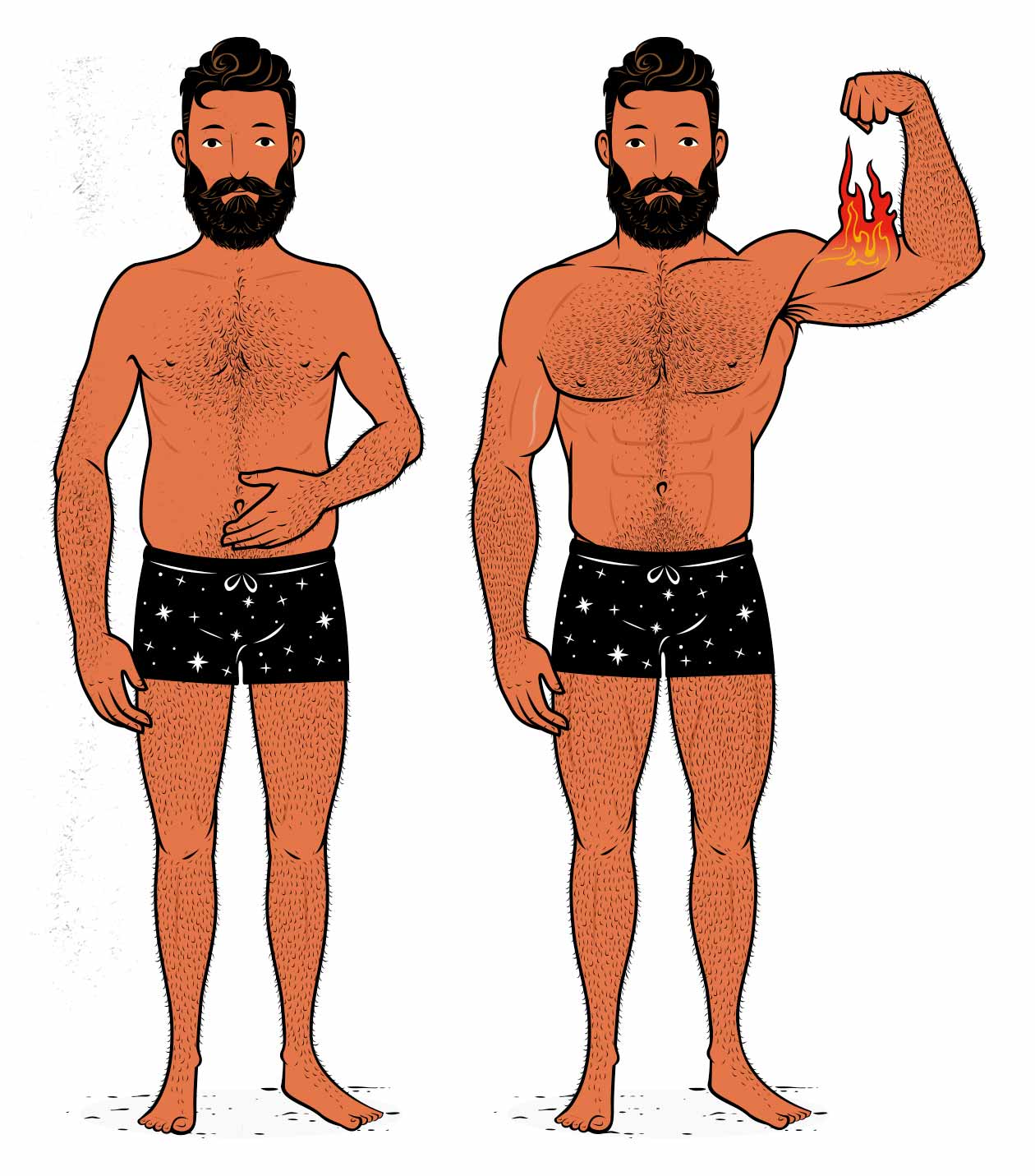
Video Version
If you’d rather watch than read, I made a video version of this article:
What Are Supersets?
A superset is when two exercises are done one after the other. For example, if you do a set of squats and then a set of chin-ups, that’s called a superset.
- Squats, set #1
- Chin-ups, set #1
- Rest 2 minutes
- Squats, set #2
- Chin-ups, set #2
Supersets are just two exercises. If you add a third or fourth exercise, you’ve got a giant set. The idea is very similar, though. You alternate between different exercises together to save time and/or to keep your heart rate up.
Are Supersets Good for Building Muscle?
Yes, supersets can help us build more muscle (study, study). There might be a magical advantage to some specific types of supersets, but most of the benefit seems to come from being able to do more exercises in a given time period while still giving our muscles enough rest (study, study, study). That means that if we spend an hour doing supersets, we’ll build more muscle than if we spend an hour doing straight sets.
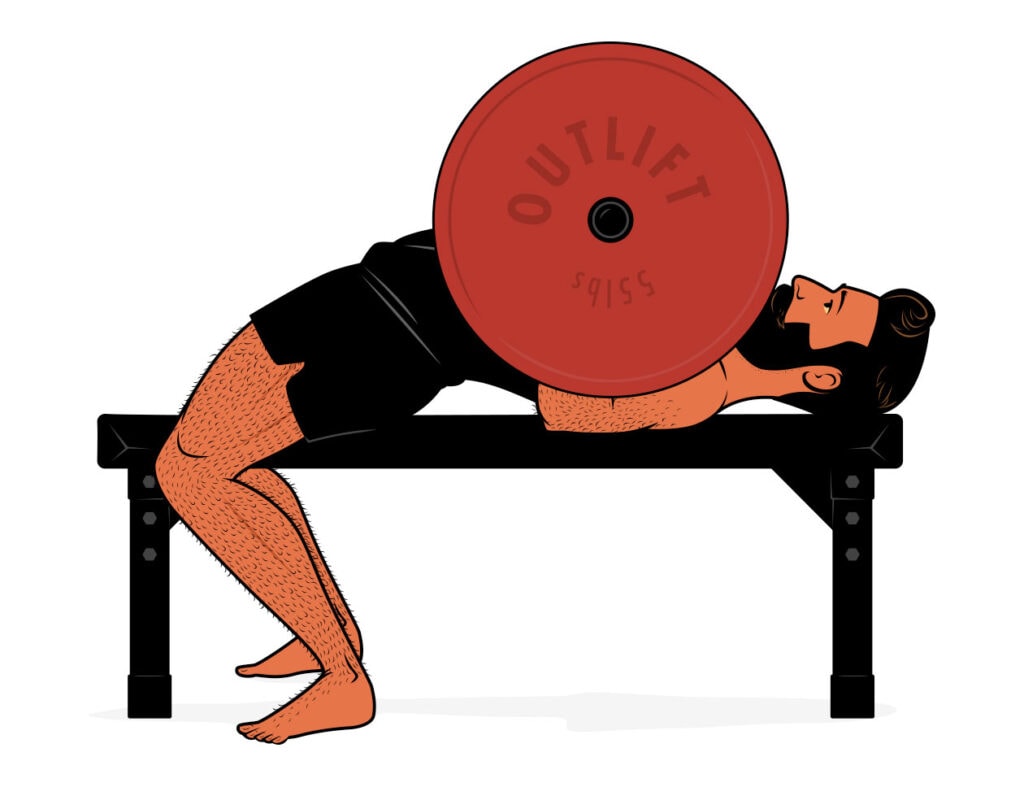
Here’s the main advantage of supersets. Let’s imagine that you’re pretty strong, and that you need a good 5 minutes of rest for your muscles to recover between sets of the bench press and barbell row. If you’re doing straight sets, then, your workout might look like this:
- Set #1 of the bench press
- Rest 5 minutes
- Set #2 of the bench press
- Rest 5 minutes
- Set #1 of the barbell row
- Rest 5 minutes
- Set #2 of the barbell row
Length of your workout: 19 minutes
You could cut those rest times down to 2 minutes between sets, but that’s not enough time for your muscles to fully recover, so you’d hemorrhage reps between sets. Maybe you get 10 reps in your first set, but only a measly 6 reps in your second set. That cuts into your training volume, and so you’d gain less muscle size and strength.
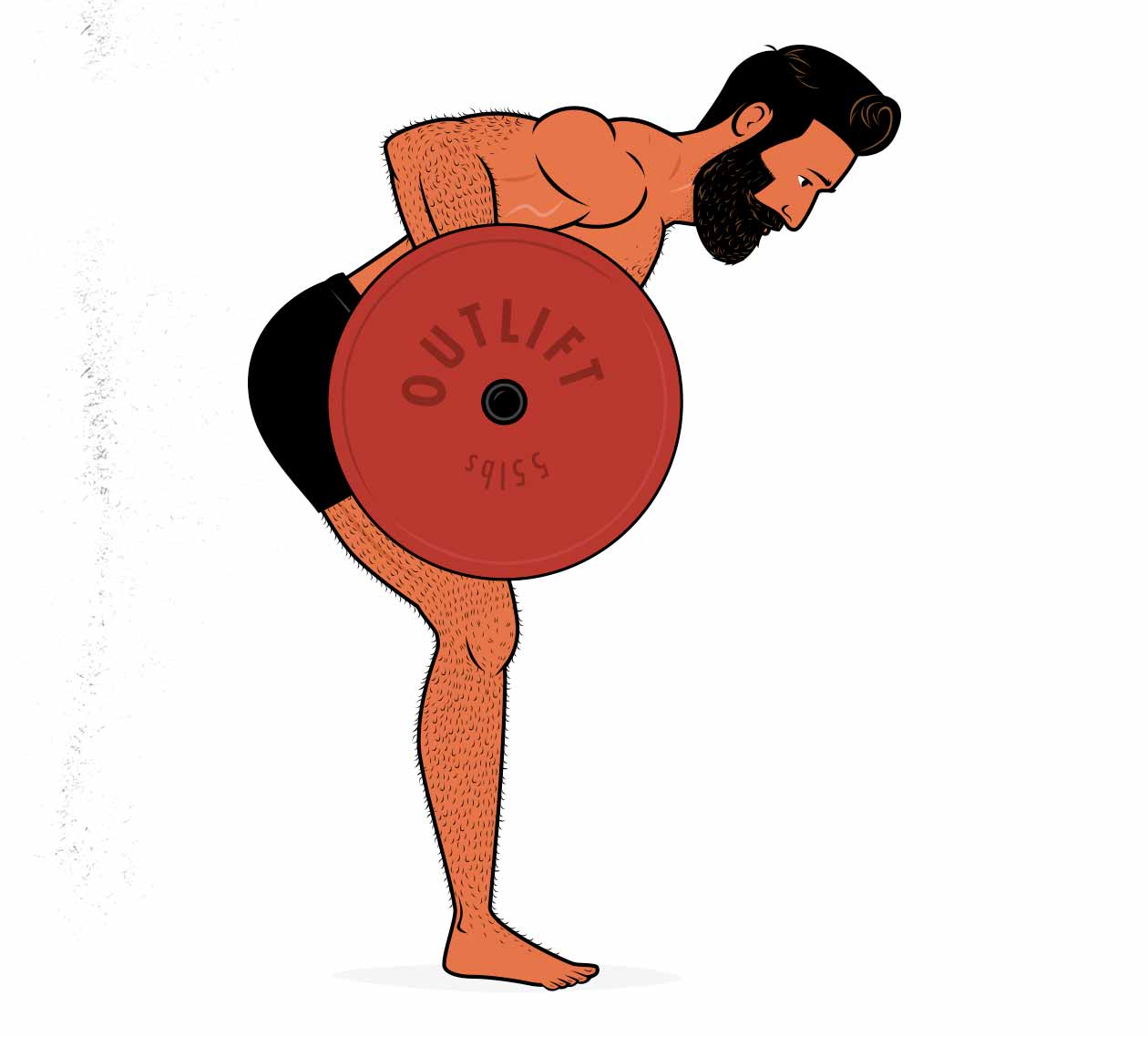
Okay, now let’s imagine that you decide to superset your bench press and barbell rows together. Your chest and back muscles needs 5 minutes of rest between each set, and you might need a good couple of minutes between exercises for your heart rate to settle back down. So we program your supersets like this:
- Set #1 of the bench press
- Rest 2 minutes
- Set #1 of the barbell row
- Rest 2 minutes
- Set #2 of the bench press
- Rest 2 minutes
- Set #2 of the barbell row
Length of the workout: 10 minutes
In both examples, you bench, rest five minutes, and then bench again. Same with your rows. The same amount of work is being done, and so you can expect to build the same amount of muscle… right?
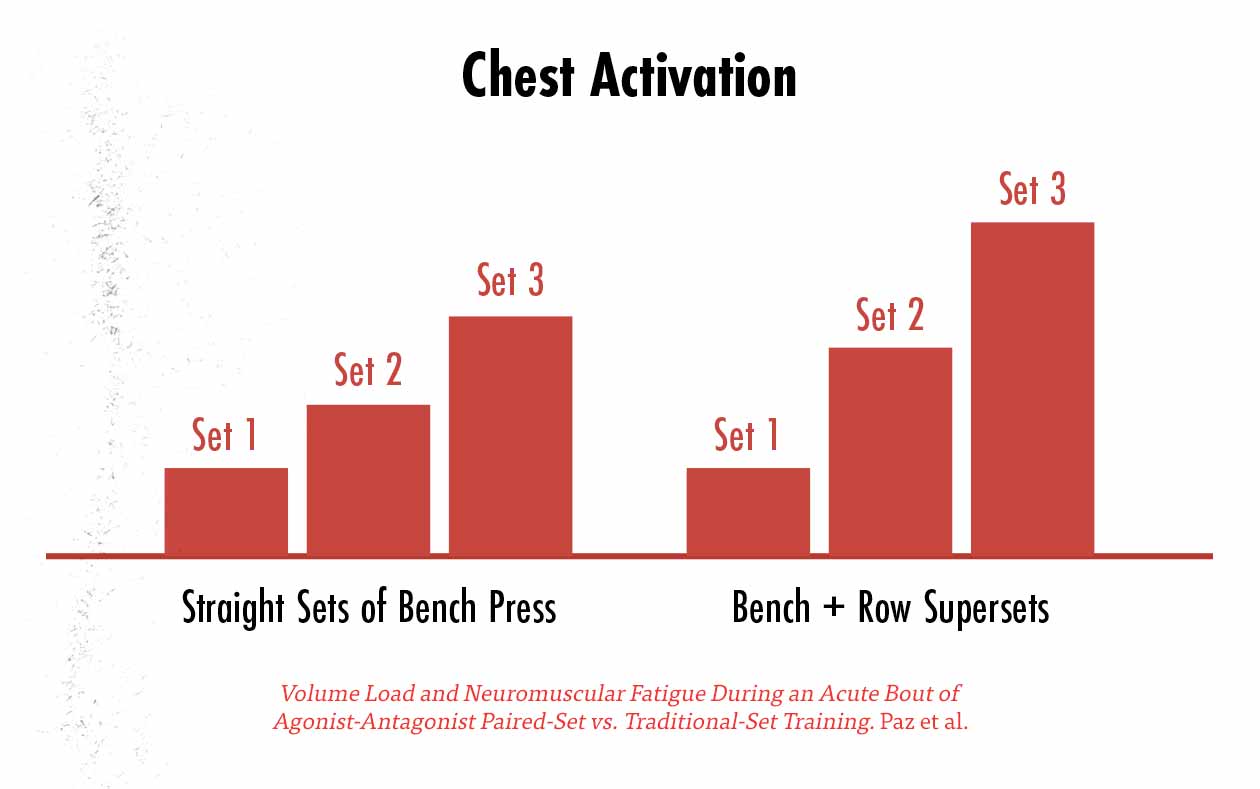
Actually, if we look at a recent study, we see that doing supersets seems to improve muscle activation from set to set. Not by much, but by enough that it might give you a small advantage. You might be able to build slightly more muscle in less time, not only improving your efficiency, but also your results.
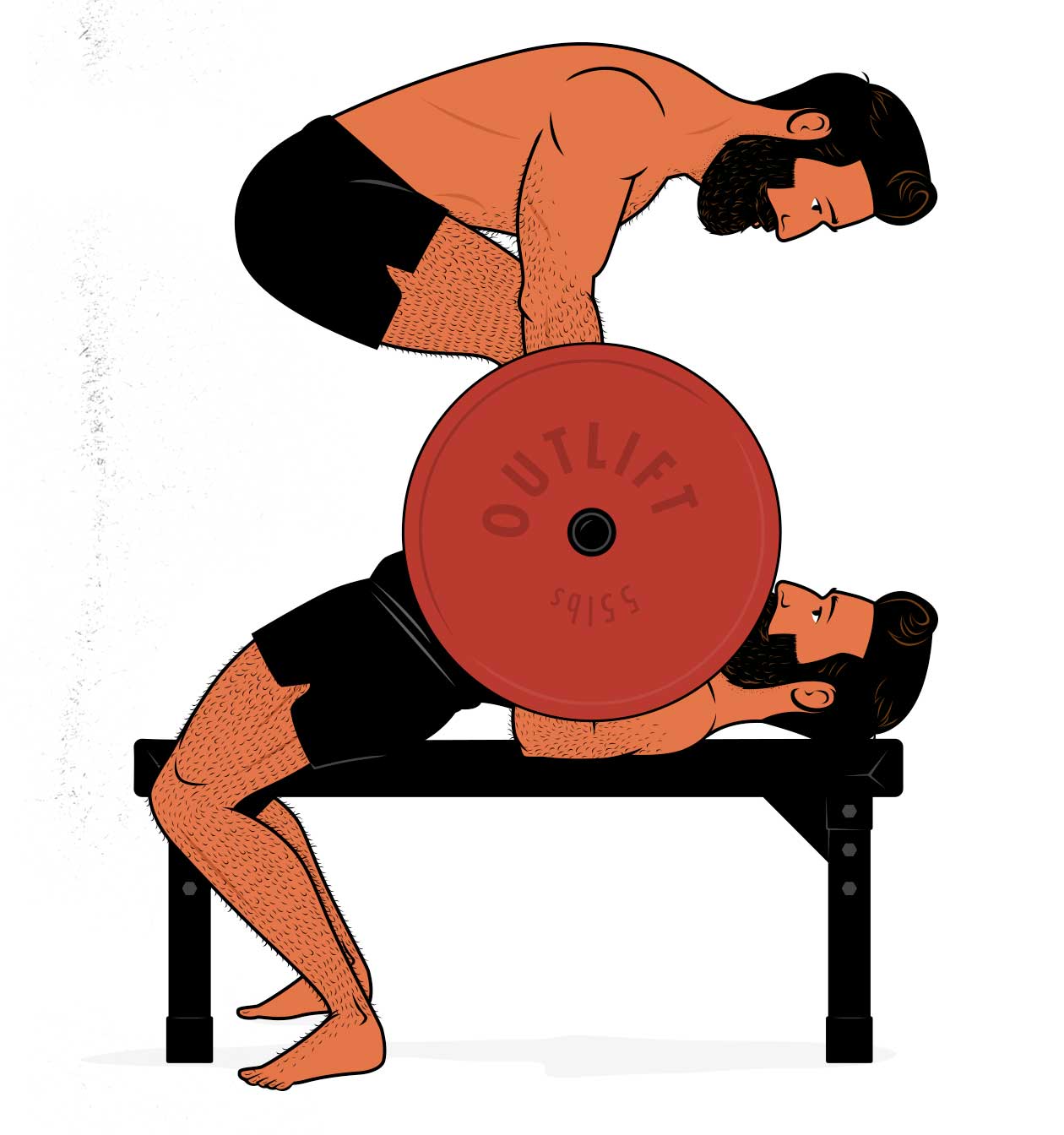
Just to be clear, though, these differences in muscle activation are quite small. What really makes these supersets special is that you’re still giving your chest a full 5 minutes to recover between sets. It’s just that instead of spending those 5 minutes lying on the ground watching Demon’s Souls tutorials on your phone, you’re doing barbell rows. In the end, you get the same results—maybe slightly better—but your workouts become much denser and more efficient.
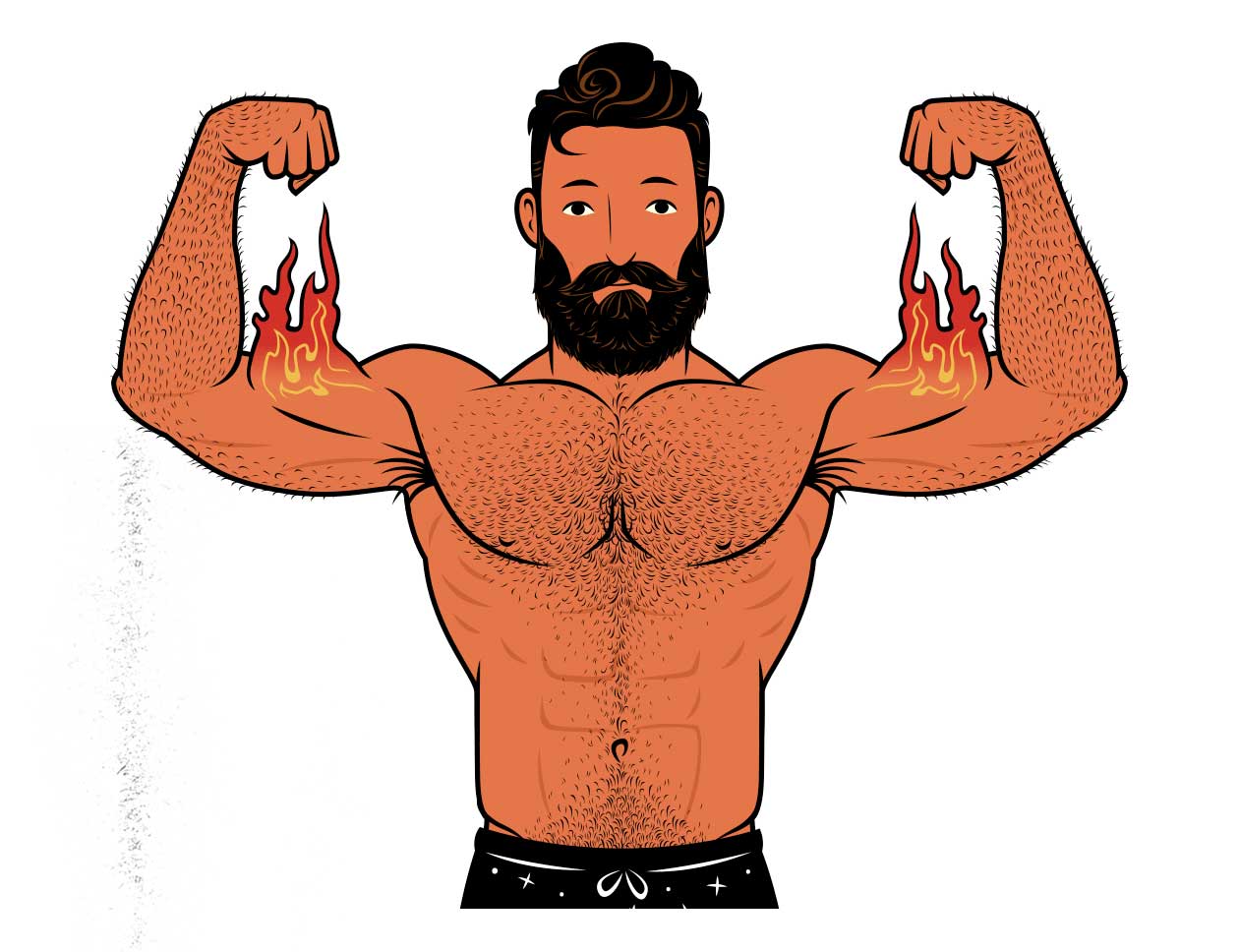
Catch is, you need to design you workouts in a way that you still give your muscles and cardiovascular system enough rest between sets. Otherwise, you risk turning your muscle-building workout into a pure cardio workout. And cardio is great, but better to build more muscle while you’re at it.
The Different Types of Supersets
There are a few different ways of doing supersets, each used for a different purpose, and each having a radically different effect on how much muscle and strength you gain.
- Cardio supersets (exercise circuits): these are designed to keep our heart rate high. A variety of big lifts are combined together with no rest between them so that our cardiovascular systems become the limiting factor. For example, doing a set of squats, then immediately dropping down for a set of push-ups, then hopping over to the chin-up bar. These are good for our general health and fitness, but they’re terrible for building muscle. This is why Body Pump, CrossFit, P90x, and most bodyweight workout routines are great forms of exercise… but aren’t very good for stimulating muscle growth.
- Bodybuilder supersets (agonist supersets): these are designed to blast a target muscle with back-to-back sets. There’s no rest time between sets, allowing us to absolutely fry our muscles. For example, doing a set of chin-ups and then immediately doing a set of barbell curls to fry our biceps. These are fine for building muscle (study), but drop sets do the same thing, they’re simpler to do properly, and they have more research proving their effectiveness (study, study).
- Opposing Muscle Supersets (agonist-antagonist supersets): these pair together exercises that train the opposite muscles. For example, the bench press is paired with barbell rows, training the chest and then the back. The idea is that fatiguing opposing muscles improves our performance on both lifts, and there’s some evidence to support that (study). Mind you, the benefit isn’t very large.
- Unrelated Muscle Supersets: these pair together exercises that are totally unrelated. For example, the squat is paired with the chin-up, training our legs and then upper backs. There’s no secret muscle-building advantage to these other than the fact that they make our workouts nearly twice as efficient.
How to Do Supersets for Muscle & Strength Gains
All of the different types of supersets have a purpose. If you have a barbell home gym and you want to squeeze in a quick cardio workouts, you can blast through some barbell circuits. Or if you’re desperate to build bigger arms, maybe you want to try some bodybuilder supersets that blast your biceps. But if you’re trying to build more muscle overall, the best way to use supersets is to train opposing or unrelated muscles.
Not only is a [superset] time-efficient, but it may also acutely enhance performance, potentially leading to greater enhancements of strength and muscle size in the long term.
Eric Helms, PhD, Monthly Applications in Strength Sport
Instead of doing chin-ups and then barbell curls, do chin-ups and then overhead presses. And follow that up with barbell curls and skull crushers. That’s a near-perfect upper-body workout, and because the sets are supersetted together, you can do it in a mere 20 minutes. And, as mentioned in the previous section, it may even help you build slightly more muscle than if you did those exercises as straight sets.
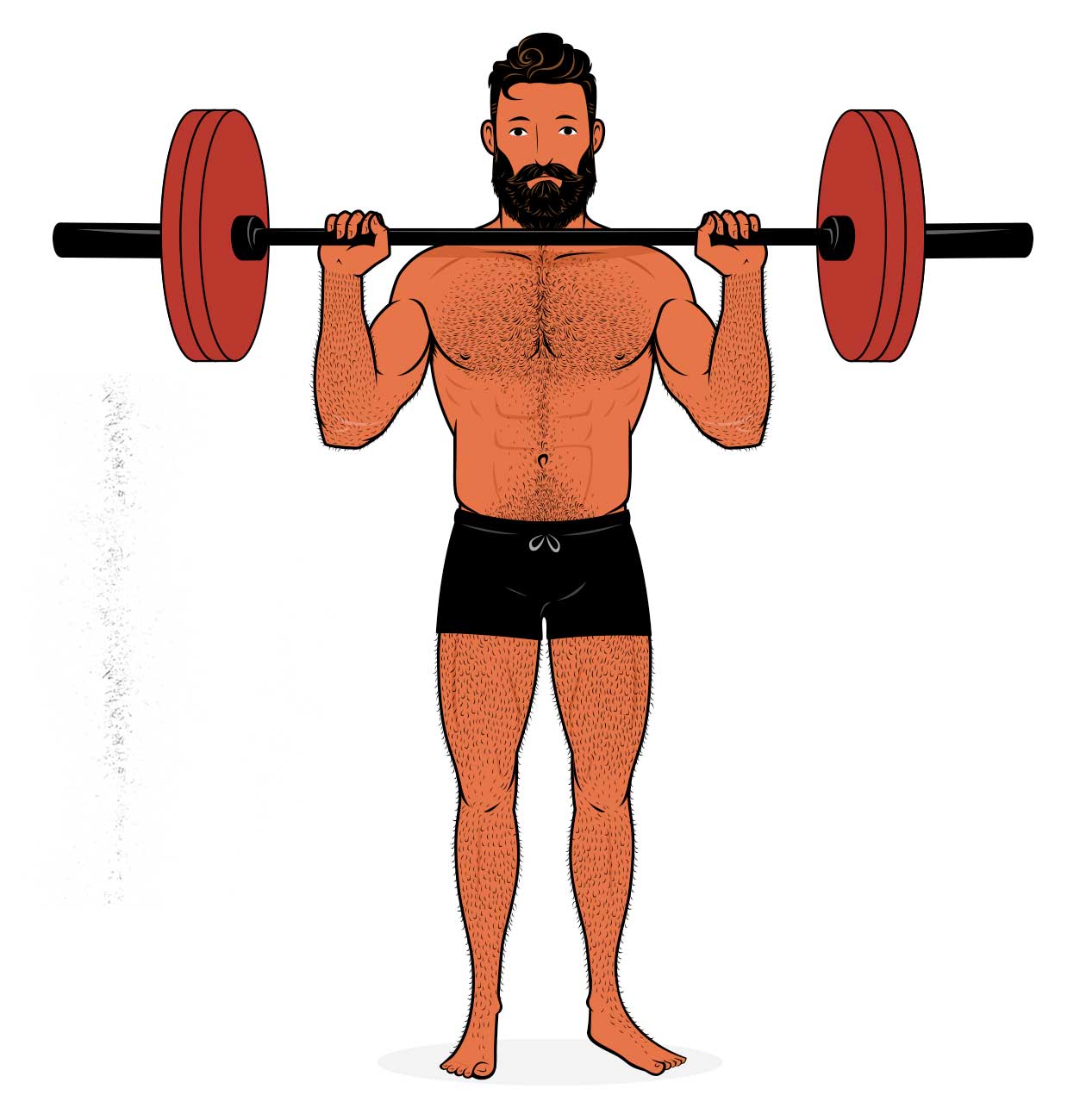
The catch is, you never want your cardiovascular fitness to become your limiting factor. You always want to be limited by the strength of your muscles. If you’re combining together the bench press and barbell row, make sure that you rest long enough between sets that your chest and back are your limiting factors. And because those exercises are such big compound lifts, that might mean resting 1–3 minutes between each exercise. If your equipment allows for it, this makes for a great default way of training.
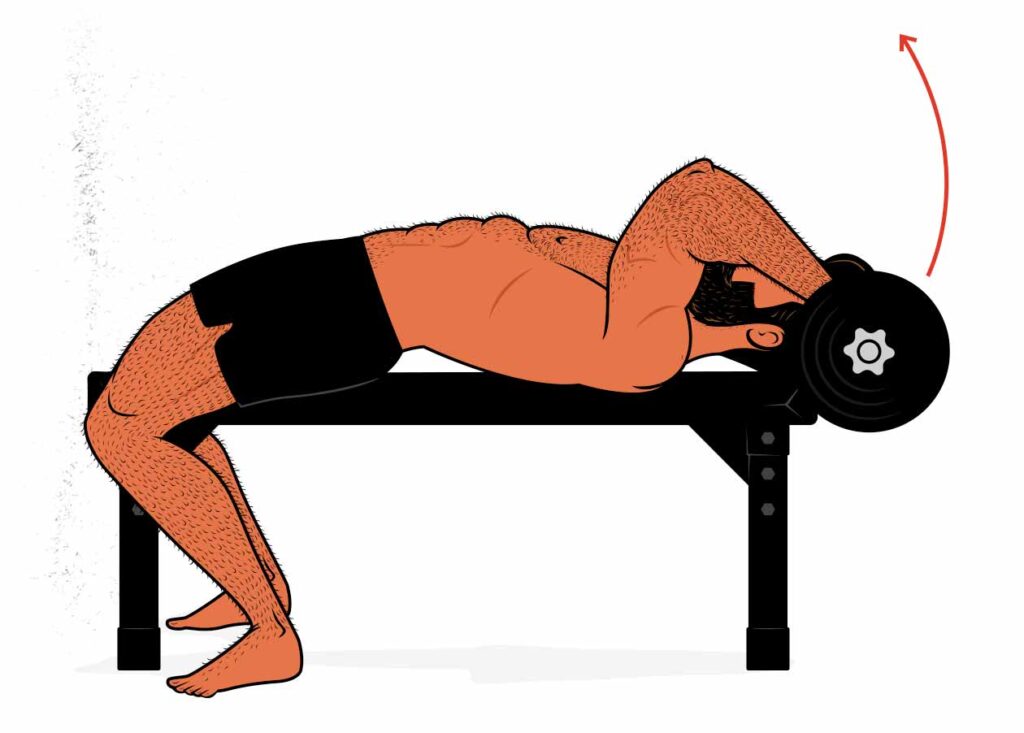
When doing smaller isolation lifts, you can often pick up the pace. For example, if you want to combine together barbell curls, skull crushers, and lateral raises, you may only need 30 seconds of rest between each set, allowing you to blast through the circuit very quickly. This is a great way to stimulate a ton of extra arm growth in just 10 minutes.
Another strategy is to take an exercise that’s big and tiring, like a squat or deadlift, and combine it with an exercise that’s small and easy, like a neck or forearm exercise. That way you get plenty of overall rest between your sets of squats and deadlifts, but you sneak in a couple of smaller exercises instead of just sitting there for 5 minutes.
Examples of Good Superset Workouts
Alright, now that we’ve got the theory down, let’s talk about some real-world examples, factoring in how realistic it is to combine these exercises together. A few years ago, we updated our Bony to Beastly and Bony to Bombshell programs, and one of the big changes we made was optimizing the supersets. Did it make the program better for building muscle? No. But people were able to complete the workouts much more quickly and conveniently. That’s how with just 3 hourlong full-body workouts per week, we’re able to help people make transformations like this one:
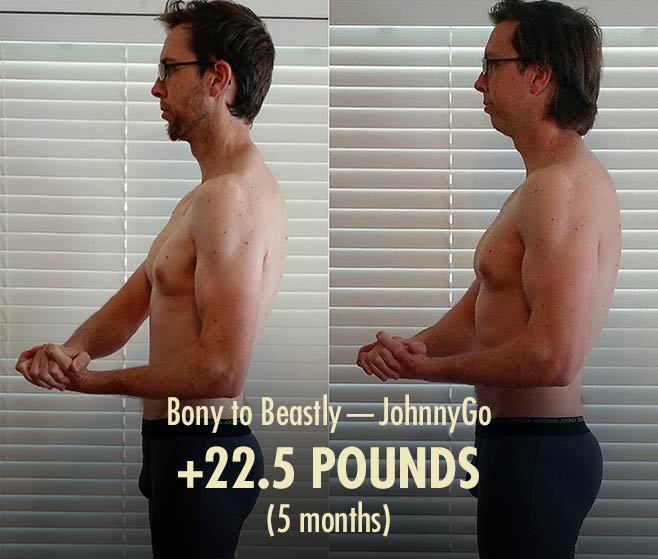
And like this one:

Here’s the approach we took:
- Front squats with chin-ups: if you have a squat rack or power cage, your chin-up bar is usually right next to where you squat. So after you finish squatting, rest for 1–2 minutes, do your chin-ups, rest again, and then go back to your squats.
- Deadlifts with hanging leg raises: if squats really tire you out, you can combine them with smaller exercises that aren’t as draining. Think of lifts like hanging leg raises (for your abs) or lateral raises (for your side delts).
- Bench press with neck curls: if you have your bench press set up and some weight plates lying around, it’s easy to squeeze in some neck curls between your sets. You can do them lying down on the same bench.
- Dumbbell bench press with 1-arm dumbbell rows: if you’re training with dumbbells on a flat bench, you can alternate between the dumbbell bench press and the 1-arm dumbbell row. Both use the same pieces of equipment but train opposing muscles. Some people can use the same weights for both exercises, too, letting the reps vary a bit. (For example, getting 10 reps on the bench press and then 12 reps on the row. As long as you’re doing 6–20 reps per set, you’ll build the same amount of muscle.)
- Biceps curls and triceps extensions: if you have dumbbells, a barbell, or a curl-bar, you can combine together your triceps extensions and biceps curls, often using the same load for both exercises, and often only needed 30–60 seconds of rest between sets. And again, because these train opposing muscle groups, it’s an ideal superset for building muscle.
- Forearm curls and extensions: one of my favourite circuits is to combine together forearm curls (using a barbell) with forearm extensions (using a weight plate). These exercises burn with a fury but aren’t very tiring, allowing us to blast through them with virtually no rest between the sets.
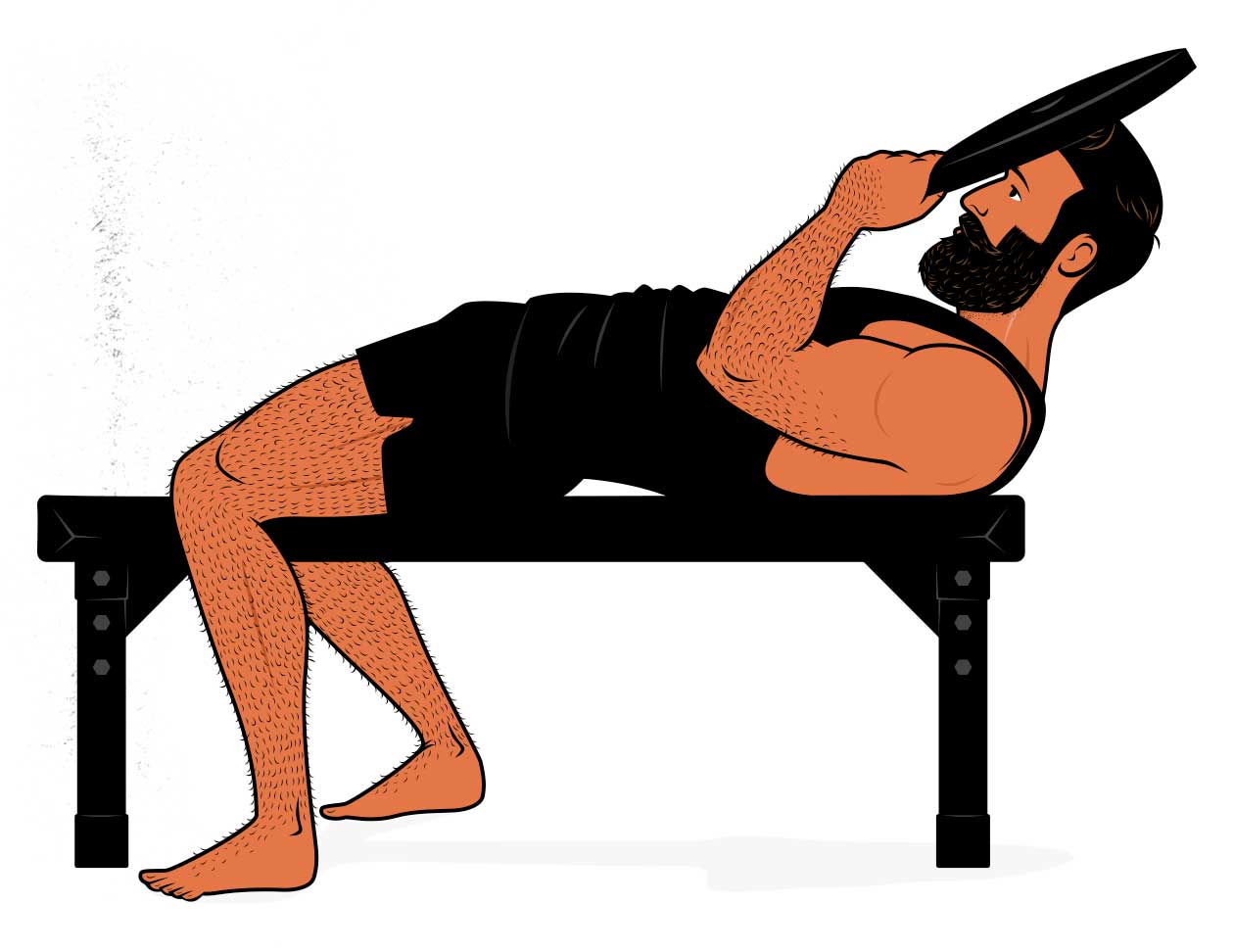
There’s and endless list of possible combinations. The trick is to find supersets that are convenient, done in the same squat rack, done on nearby exercise machines, or using the barbell. And to find exercises that feel good to do one after the other.
And when training with limited equipment or in a busy gym, remember that you can always mix in bodyweight exercises. You can do sets of push-ups, planks, or crunches between your sets of squats, deadlifts, chin-ups, or rows.
Just remember the general rule of putting your compound lifts before your isolation lifts. Don’t do your barbell curls between sets of squats if you’re doing chin-ups afterwards. If you do, your biceps will limit your performance on your chin-ups, preventing you from working your back.
Summary
If you compare supersets against straight sets, they both stimulate the same amount of muscle growth. There’s nothing magic about them. But by supersetting your exercises together, you can get the same amount of work done in about half the time, allowing you to build more muscle with less time spent training.
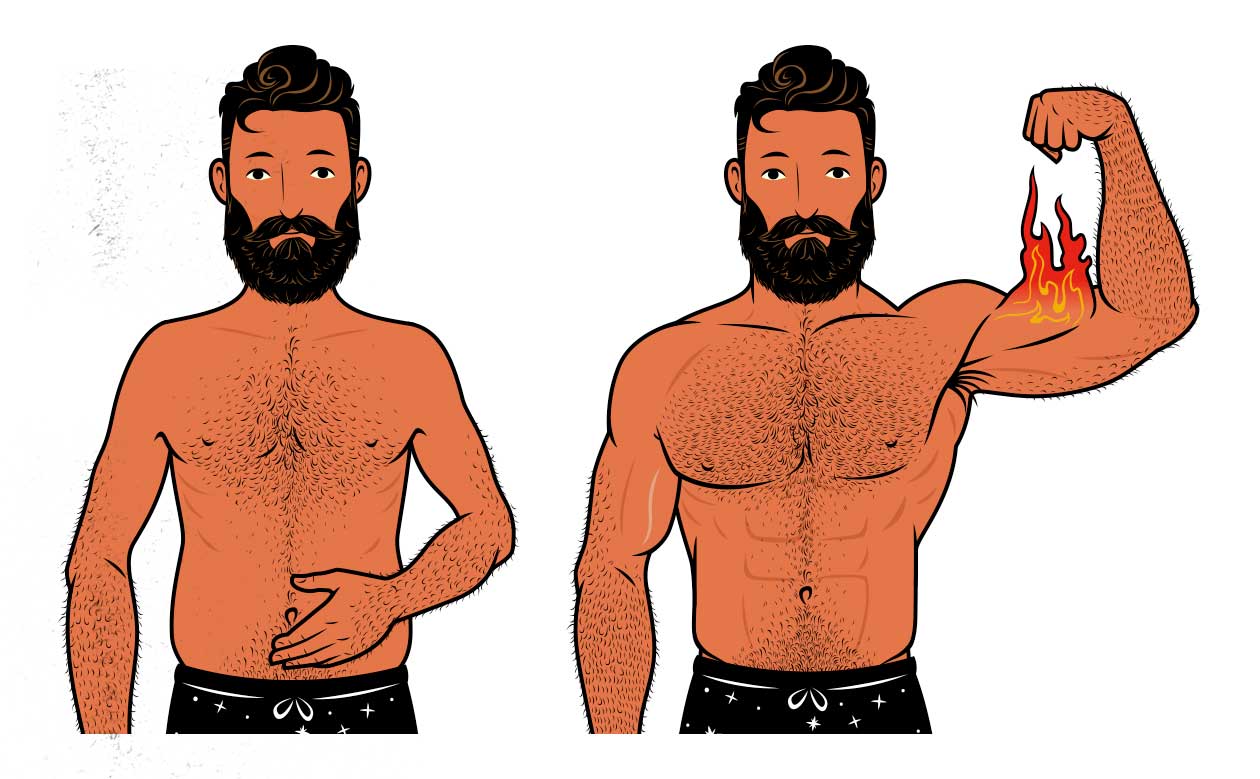
We try to take advantage of supersets in all of our muscle-building programs, Marco uses them to train professional and Olympic athletes, and I’ve been using them for the past 10 years in my own training. They’re always optional, though, and there’s never any harm in doing straight sets. Supersets are just an option to keep in mind.

As always, if you want a customizable workout program (and full guide) that builds these principles in, check out our Outlift Intermediate Bulking Program. We also have our Bony to Beastly (men’s) program and Bony to Bombshell (women’s) program for skinny beginners. If you liked this article, you’ll love our full programs.




Great information as always! Thank you for the thought and time you’ve put into this. I can’t remember if this is in the eBook, but if it’s not, it would be a worthy inclusion for any update. Great stuff!
Thank you, Jonathan!
It’s in the Bony to Beastly eBook and program, and we mention it briefly in the Outlift guide, too. With the next update I can include all the new research 🙂
Hi Shane. Loved these articles. Thank you.
My question is whether longer resting periods are always better. NI am inclined to say yes because, as you taught us, what counts is doing effective sets. And more reps overall.
Problem is that in the past I read that reducing rest times is also a form of “progress.” So I always tried to keep the time short. Thinking that increasing rest time means would mean regression. Then from you I learned that longer resting times are an actual necessity once you get much bigger and stronger.
So in conclusion we should use supersets the way you suggest because not only do they shorten the workout, but they actually increase the total rest time on the worked muscles. And that is always a good thing while trying to build muscle and strength. Right?
Hey Thomas,
You’re right. Longer rest times improve your performance on subsequent sets, letting you get more reps or lift more weight, which is great for building muscle. But there are advantages to short rest times, too: progressively shorter rest times is a form of progressive overload, your workouts will get shorter, and you’ll get a bigger pump (which has advantages). We’ve got a full article going over rest times, covering all the research and going into the pros and cons different styles of training.
With supersets, you get some of the advantages of both styles of training. Your muscles get plenty of rest between sets, allowing you to lift more total weight per workout, but your workouts also become shorter, denser, and more efficient. And you might get a tiny bit of extra muscle activation. But is that always the best way to train? Not always. For example, if someone wanted to improve their bench press 1-rep max as quickly as possible, I’d recommend they start their workouts with straight sets of the bench press, taking long rest times between each. That way they aren’t tiring themselves out with rows, which are a lower priority for them right now.
I also think that strategically using shorter rest times can be a good way to vary your training stimulus. In our Outlift Bulking Program, the first 5-week phase uses shorter rest times. 2 minutes for the big compound lifts, even shorter for smaller lifts. But then the two phases after that use longer, more flexible rest times.
But for gaining overall muscle mass and strength, I think supersets are a great default way of training. Whenever I’m setting up a workout routine, I’m always thinking of where I might be able to use them. Supersetting some of the bigger lifts is often the difference between a 90-minute workout and a 60-minute workout, and with no differences in muscle growth.
Thanks Shane. I will do more supersets where possible, adding some more rest time between sets of the main lifts. For example instead of deadlift straight sets with 2.5 minutes of rest I can do 2 minutes of rest , v-ups, 1 minute of rest. Thanks for the link, I read the article again and it is very useful. Yes I have been through the Outlift first phase, it was very cool, and a suffering! Around February I plan to do it again, and I am a bit scared of it 🙂
Yeah, that sounds perfect 🙂
And ahaha yeah I found it the hardest phase as well.
Hi Shane, yes superseding makes a workout smart and efficient.
I like super setting upper body exercises with lower body exercises. For example, squats/deadlifts with chin up or parallel bar dips. It eleminates any chances of interference or lower performance if both supersetted exercises were for upper or lower body and were poorly selected. Supersetting chin-up with curls or benching with dips, for example, will fatigue same muscles and compromise the performance on both.
Secondly, I think that in supersets, one exercise should be the main focused exercise that you aim to improve that day and second exercise, the supersetted one, should be a submaximal effort exercise that you should not go all out to exhaustion. It is especially important if both exercises belong to upper body or both are for lower body. For example, benching with all out effort combined with heavy squatting/deadlifting all out effort will drain us quickly.
Hey Farhan, you’re making a good point. And if I reflect on my own training, that’s the kind of attitude I often take with it. I’ll combine an exercise I’m eager to improve (e.g. bench press) with a lift designed to add some training volume to a given muscle (e.g. barbell row for my upper back). So you’re, right, I’m really fighting on that bench press, not as much on the barbell row.
Thanx for the endorsement Shane.
Hi Shane. Interesting update and just in time to reread this article. I added a calisthenics day in the 3-day easy outlift routine and I will superset front lever with back lever progressions. It feels much better 🙂
That sounds awesome 🙂
t2mt1z